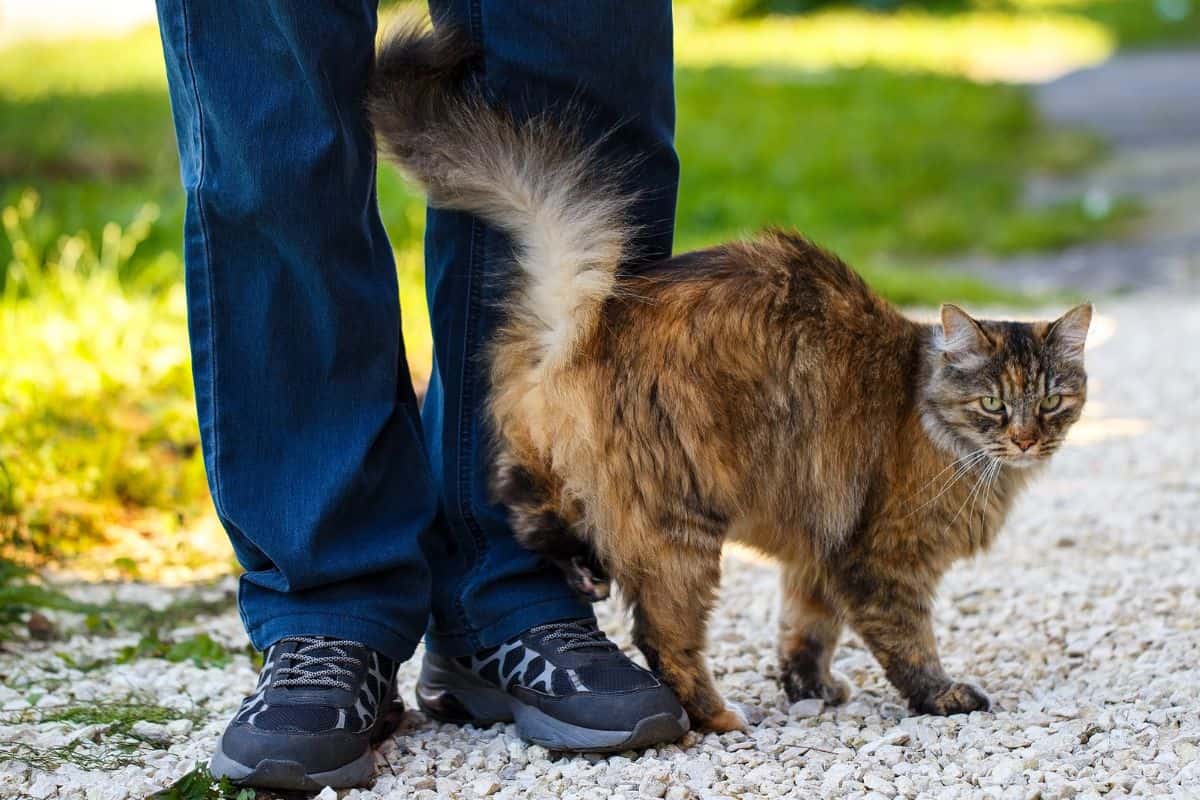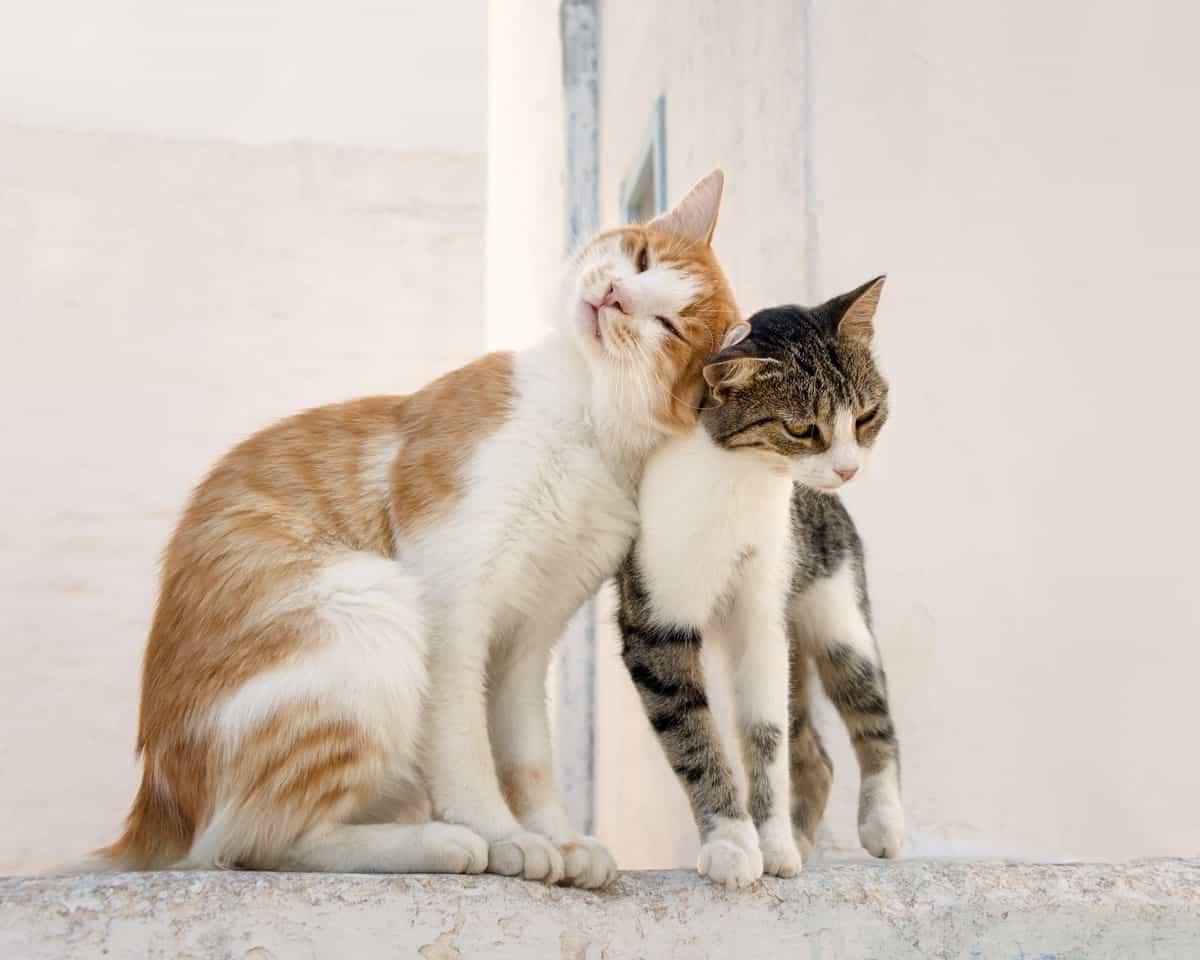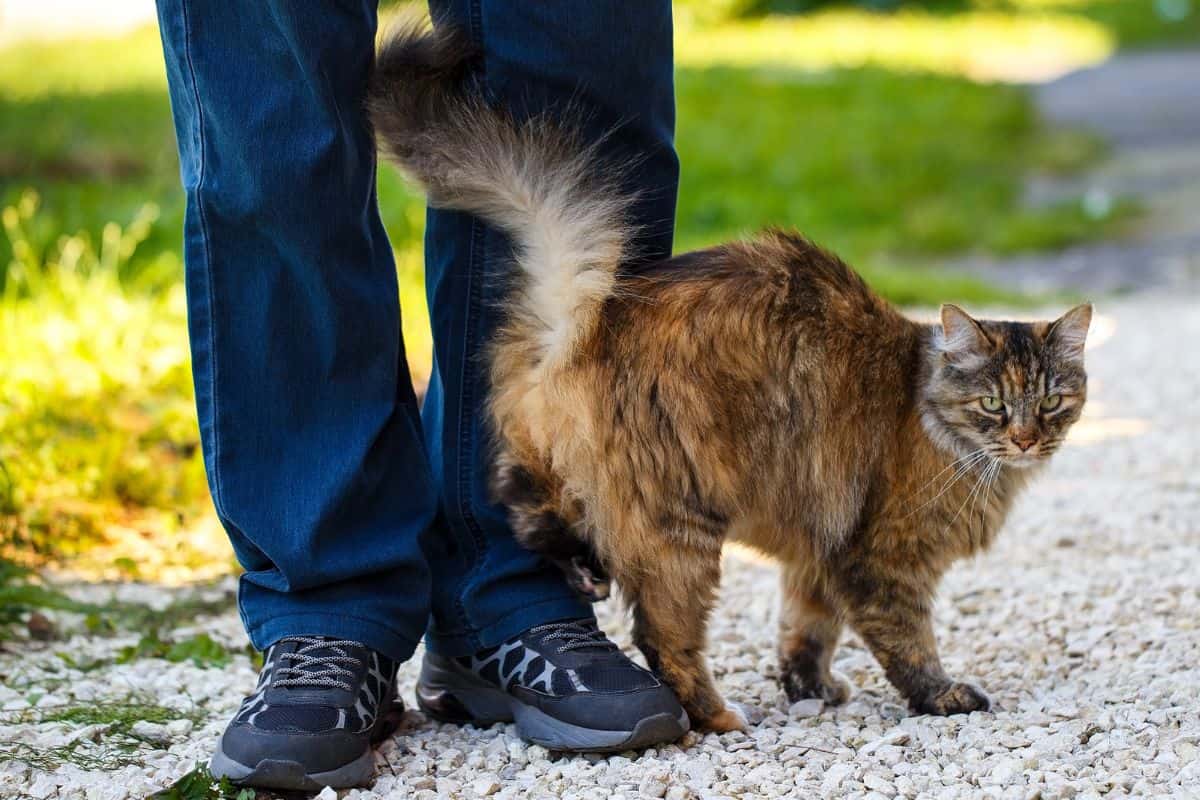A familiar scene among pet owners is their cat rubbing up against their legs as they excitedly wait for you to open that can of food. It’s often hard to walk without tripping on your cat as they move in and around your legs.
While your cat rubbing up against you might seem like a simple act of affection, there is more to it than meets the eye. Here are a few reasons why your cat does this.
Scent marking
A cat’s body is covered in scent glands. Among other locations, cats have scent glands in their cheeks, above their eyes, along their flanks, their anus, and the base of their tail. Cats even have scent glands between the pads of their paws.
Smell is an important way that cats communicate, and these scent glands are used by cats to spread their smell.

One of the primary reasons why cats spread their smell it to mark their territory. That includes you. When your cat is rubbing up against you, they are covering you with their smell as a way of telling other cats, “that’s my human”.
Cats will rub not only against you, but other pets in the house, furniture, the floor, and any other object or environment they want to “claim” as theirs. The act of scent marking helps cats feel secure and comfortable in their environment, knowing that they have established their presence.
Exchange of scents
Scents is not a one-way street with cats. When a cat rubs against you, they are also seeking to pick up your scent. This exchange of scents creates a sense of familiarity and security for your cat, making them feel at ease in your presence.

Essentially, your cat is creating a shared social smell for their household. This is similar to social behaviors in feral cat colonies, where cats rub against each other to establish and maintain group hierarchies and to mark the boundaries of their group.
This intermingling of scents creates a communal odor that defines the cat colony’s territory and social structure.
Rolling is a similar behavior by cats that is also used to spread and collect scents.
Bonding
Rubbing is also a sign of affection and can often be accompanied by purring. Cats only rub their scent on people they trust and feel affection towards.
When a cat rubs against your legs, it’s a sign that they feel comfortable and safe around you. In fact, this behavior is a way for them to strengthen the bond between you and them.
By physically touching you, your cat is sharing their scent with you, making you a part of their extended family or social group.

Cats that share a bond, will frequently have sessions to exchange scents with each other. This is known as allo-rubbing. So, when your cat initiates contact with you in the form of head bunting or rubbing, you should reciprocate in kind.
Your cat needs attention
Your cat will also use physical touch, whether it’s head bunting, reaching out with a gentle paw, or rubbing up against your legs, to let you know, “hey, please pay attention to me.”
For example, when your cat rubs against your legs, they may be trying to encourage you to groom them, either by petting them or brushing their fur.
This behavior is an indication that your cat is in need of something, such as food, water, or a good petting or play session. By rubbing against your legs, your cat is initiating a form of communication, hoping to get your attention in order to get you to respond.
Cats rub for multiple reasons
Rubbing and rolling in cats is used for scent marking, communication, and bonding. The next time your cat brushes against your legs, remember that this seemingly simple act is, in fact, an expression of trust, affection, and connection.
Read next: If Cats are Independent, Why Do They Form Bonds?
References
Bradshaw, J. W. (2016). Sociality in cats: A comparative review. Journal of veterinary behavior, 11, 113-124. https://doi.org/10.1016/j.jveb.2015.09.004
Crowell-Davis, S. L., Curtis, T. M., & Knowles, R. J. (2004). Social organization in the cat: a modern understanding. Journal of feline medicine and surgery, 6(1), 19-28. doi:10.1016/j.jfms.2003.09.013
Ohkawa, N., & Hidaka, T. (1999). Rubbing and Rolling Behavior in the Domestic Cat, Felis catus. Memoirs of the Faculty of Science, Kyoto University. Series of biology. New series, 16(2), 95-103.







